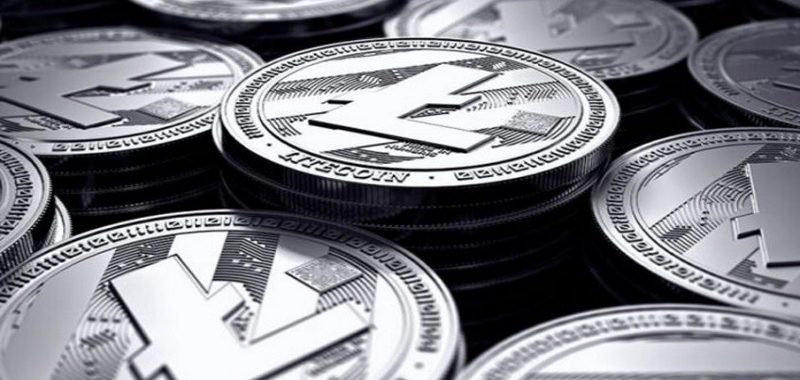2018-10-2 05:10 |
This article is a step-by-step how-to guide for creating bitcoin paper wallets. It walks through choosing a paper wallet generator, securing the computer environment to use it on, configuring and printing the wallets, cleaning up before and afterward to thwart hackers, and physically securing the wallets.
Also read: 160 Crypto Exchanges Seek to Enter Japanese Market, Regulator Reveals
Why Use a Paper WalletA paper wallet is a piece of paper containing both the private and public keys to a single bitcoin address. Paper wallets are a cheap and secure way to store bitcoin savings, having been around since the earliest days of Bitcoin. Many believe they are the most secure way to store a bitcoin stash, simply because they keep private keys cold or offline, away from hackers. As long as they are physically well protected, paper wallets can be a secure method of storing coins for long periods of time.
Examples of bitcoin paper wallets.In order to spend coins from a paper wallet, one must “sweep” the private key on it into a hot wallet, such as a mobile or desktop wallet. At the point of sweeping, the cold storage security benefits are lost. In contrast, a hardware wallet such as a Ledger or Trezor is cold storage that allows spending without having to first extract the key.
Choosing a Paper Wallet GeneratorThe first step in making a bitcoin paper wallet is to choose a generator to use. The three most popular BTC paper wallet generators are Bitaddress.org, Bitcoinpaperwallet.com, and Walletgenerator.net. Bitcoin.com offers a paper wallet generator for BCH.
Bitaddress.org is an open-source engine that is the oldest available for generating paper wallets using one’s own browser. Bitcoinpaperwallet.com uses Bitaddress.org’s open-source code but offers more instruction and additional products on its website. The Bitcoin.com paper wallet generator is also forked from Bitaddress.org’s code.
Steps to Creating a Bitcoin Paper WalletIn the steps below for generating a bitcoin paper wallet, Bitaddress.org is used for demonstration. However, the same overall process can be applied to the other paper wallet generators.
PreparationsStep 1: Clean up the computer and set up an offline printer.
Before generating a paper wallet, clean up the computer to be used by scanning it with up-to-date, high-quality antivirus and anti-malware tools. In addition, ensure that the printer to be used is connected directly to the computer and can print while not connected to the internet.
Step 2: Download a paper wallet generator.
While it is possible to generate a paper wallet online, it is much more secure to generate it offline. Visit the generator’s website and download a zip file that contains a copy of the website. For Bitaddress.org, the download link is at the bottom of the page. Downloaded files will be deleted after use, so save them somewhere easily accessible.
Once downloaded, scan the zip file for malware before extracting. For advanced users, verify the file’s integrity by downloading and checking the author’s PGP signature, usually found on the same page as the zip file download link.
Step 3: Disconnect from the internet.
Before generating a paper wallet, disconnect the computer and printer from the internet. Choose a web browser such as Chrome or Firefox to use and disable all of its add-ons and extensions.
Step 4: Generate and print as many paper wallets as desired.
Once disconnected from the internet, click the Bitaddress.org.html file from the list of extracted zip files and open it in the internet browser with disabled add-ons and extensions.
Move the mouse around or type random characters into the text box on the screen in order to add randomness while generating a bitcoin address. For Bitaddress.org, once the level of randomness reaches 100 percent, a Single Wallet will be automatically generated.
A single wallet has no artwork.While this single wallet generator can be used and printed for a quick single address, Bitaddress.org offers the options of creating paper wallets, wallets in bulk, brain wallets, vanity addresses, and multi-signature split wallets. For the purpose of this guide, the Paper Wallet option is chosen, which has a number of customizations.
Different generators offer different styles of paper wallet artwork. Bitaddress.org’s artwork can be turned off. Any number of unique paper wallets can be generated. For an extra layer of security, there is also the option of adding a passphrase to them that employs BIP38 encryption to each wallet. If used, be sure to safely store this passphrase separately from the paper wallets since the wallets will not be accessible at all without it.
After generating the desired paper wallets, print them out with the offline printer.
Step 5: Delete all downloaded files and clear cache.
After the paper wallets have been printed, delete all downloaded files from the computer, empty the recycle bin, clear the printer’s cache, and reboot the computer before re-connecting to the internet.
Step 6: Send crypto to each wallet.
The next step is to fund the wallets. People have been filling up their paper wallets with both large and small amounts of coins, depending on their purposes such as giving them away as gifts or retaining them as long-term savings. Users sending a large number of coins to a paper wallet may want to test each one by sending a few satoshis to its public address before loading a large amount.
Step 7: Keep the wallets secure.
For use as storage, once loaded with cryptocurrency, it is important to hide and protect the paper wallets physically to keep them secure. For most designs, fold the paper wallets so that their private keys are not showing, and optionally place a tamper-proof seal sticker on the edges of the folded parts.
Finally, protect them from harm including from natural disasters, theft, and fire such as by placing them in a fireproof safe. Storing them in a bank’s security deposit box is not recommended.
Disclaimer: Bitcoin.com does not endorse or support any products mentioned in this article. None of the information in this article is intended as an offer or solicitation of an offer to buy or sell, or as a recommendation, endorsement, or sponsorship of any products or companies. Bitcoin.com is not responsible, directly or indirectly, for any damage or loss caused or alleged to be caused by or in connection with the use of or reliance on any content, goods or services mentioned in this article.
Have you set up a bitcoin paper wallet yet? Let us know in the comments section below.
Images courtesy of Shutterstock, Bitaddress.org, bitcoinpaperwallet.com, and walletgenerator.net.
Need to calculate your bitcoin holdings? Check our tools section.
The post How to Set up a Bitcoin Paper Wallet appeared first on Bitcoin News.
origin »Bitcoin (BTC) на Currencies.ru
|
|

































